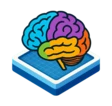The intricate world of neuroscience presents both fascinating opportunities and formidable challenges for students, medical professionals, and lifelong learners seeking to understand the human nervous system. Neuromed emerges as a transformative educational platform specifically designed to demystify the complex realms of neuroanatomy and neurophysiology through innovative digital learning methodologies. This comprehensive application addresses the universal struggle that learners face when attempting to master the brain's structural organization, neural pathways, functional systems, and physiological mechanisms that govern human consciousness, sensation, movement, and cognition.
Understanding Neuromed and Its Educational Philosophy
Neuromed represents a significant advancement in neuroscience education, recognizing that traditional textbook approaches often fall short when teaching three-dimensional anatomical structures and dynamic physiological processes. The application embraces modern pedagogical principles that emphasize active learning, visual engagement, and progressive knowledge building rather than passive information absorption. By transforming abstract concepts into interactive experiences, the platform helps learners develop robust mental models of nervous system organization that support both academic success and practical clinical application.
The educational philosophy underlying Neuromed acknowledges that neuroscience encompasses multiple interconnected domains requiring integrated understanding rather than isolated memorization. Neuroanatomy focuses on structural organization—identifying brain regions, tracing neural pathways, understanding tissue composition, and recognizing spatial relationships between different nervous system components. Neurophysiology examines functional mechanisms—explaining how neurons generate electrical signals, how synaptic transmission enables communication, how sensory systems process information, and how motor systems coordinate movement. Neuromed seamlessly integrates these complementary perspectives, helping learners understand that structure determines function while functional requirements shape anatomical organization.
Developer Keyth León created Neuromed with the vision of democratizing access to high-quality neuroscience education, ensuring that geographical location, institutional resources, or economic circumstances never prevent motivated learners from accessing excellent educational materials. The completely free licensing model removes financial barriers that often limit educational opportunity, while the multilingual interface supporting 46 languages including English ensures that linguistic diversity never impedes knowledge acquisition. This inclusive design philosophy reflects a commitment to educational equity and global knowledge sharing.
Comprehensive Neuroanatomy Coverage and Learning Resources
Neuromed provides exhaustive coverage of neuroanatomical structures spanning the entire nervous system from macroscopic brain regions to microscopic cellular components. The central nervous system receives detailed attention, with comprehensive modules exploring cerebral cortex organization, subcortical structures, brainstem anatomy, cerebellar architecture, and spinal cord organization. Each region receives treatment at multiple scales, helping learners understand both gross anatomical relationships visible in dissection and fine structural details revealed through microscopic examination.
The application employs sophisticated visual representations that transform static anatomical images into dynamic learning tools. Interactive diagrams allow learners to explore structures from multiple perspectives, rotating three-dimensional models to understand spatial relationships that remain ambiguous in traditional two-dimensional illustrations. Labeling exercises challenge learners to identify structures actively rather than passively reviewing pre-labeled diagrams, strengthening memory encoding through retrieval practice. Progressive disclosure features present information hierarchically, introducing major structures before revealing detailed subdivisions, preventing cognitive overload while building comprehensive understanding systematically.
Neuromed addresses peripheral nervous system anatomy with equal thoroughness, covering cranial nerves, spinal nerves, autonomic nervous system organization, and sensory receptor distribution. This comprehensive scope ensures that learners develop complete understanding of nervous system architecture rather than focusing narrowly on central structures while neglecting peripheral components essential for clinical practice. The integration of central and peripheral neuroanatomy within a unified learning platform reinforces the functional continuity of the nervous system as an integrated whole.
In-Depth Neurophysiology Modules and Functional Understanding
The neurophysiology components within Neuromed explore the dynamic processes that bring anatomical structures to life, explaining how the nervous system generates, transmits, processes, and integrates information to coordinate body functions and enable conscious experience. Foundational modules examine cellular neurophysiology, explaining neuronal membrane properties, action potential generation and propagation, synaptic transmission mechanisms, and neurotransmitter systems. These fundamental concepts provide the mechanistic foundation necessary for understanding higher-level nervous system functions.
Sensory system physiology receives comprehensive treatment within Neuromed, exploring how specialized receptors transduce physical stimuli into neural signals, how ascending pathways convey sensory information to appropriate brain regions, and how cortical processing extracts meaningful information from raw sensory data. Separate modules address vision, audition, somatosensation, olfaction, and gustation, respecting the unique physiological mechanisms characterizing each sensory modality while highlighting common organizational principles that unite sensory processing across modalities.
Motor system physiology modules within Neuromed explain how the nervous system plans, initiates, and coordinates voluntary movements and maintains postural stability. Coverage includes motor cortex organization, descending motor pathways, spinal motor circuits, cerebellar contributions to movement coordination, and basal ganglia involvement in movement selection and initiation. These modules help learners understand both normal motor control and the pathophysiological mechanisms underlying movement disorders encountered in clinical practice.
Neuromed also addresses higher cognitive functions including attention, memory, language, and executive control, bridging the gap between cellular neurophysiology and complex behavioral capabilities. These modules introduce learners to cognitive neuroscience perspectives that integrate psychological concepts with neurobiological mechanisms, preparing them for advanced study in neuropsychology, behavioral neurology, or cognitive science fields.
Interactive Learning Features and Engagement Strategies
Neuromed incorporates diverse interactive features that transform passive content consumption into active learning experiences proven to enhance retention and understanding. Self-assessment quizzes distributed throughout content modules provide immediate feedback on comprehension, helping learners identify knowledge gaps requiring additional attention while reinforcing correctly understood concepts through retrieval practice. The question formats vary strategically, including multiple-choice items testing recognition, fill-in-the-blank exercises requiring recall, and labeling activities demanding precise anatomical knowledge.
Progress tracking systems within Neuromed provide learners with clear visibility into their mastery development across different topics and competency domains. Visual dashboards display completion percentages, quiz performance trends, and time invested in different modules, supporting metacognitive awareness that enables learners to allocate study time strategically. This data-driven approach to learning optimization helps users identify areas requiring additional focus while building confidence through visible documentation of achieved progress.
The application likely incorporates spaced repetition algorithms that intelligently schedule review sessions for previously studied material at optimal intervals for long-term retention. This evidence-based approach to review scheduling ensures that information transfers from short-term memory into durable long-term knowledge that remains accessible during examinations and clinical practice. Spaced repetition represents one of the most powerful learning techniques available, and its integration within Neuromed provides users with significant advantages over traditional study approaches.
Multilingual Accessibility and Global Educational Impact
Neuromed's support for 46 languages represents an extraordinary achievement in educational accessibility that dramatically expands the platform's potential impact. Neuroscience education traditionally occurs predominantly in English, creating significant barriers for learners whose native languages differ from the dominant academic language. By providing complete content translation across dozens of languages, the application ensures that linguistic diversity never prevents motivated learners from accessing high-quality neuroscience education.
The multilingual functionality extends beyond simple text translation to encompass anatomical terminology, physiological concepts, and instructional language, maintaining educational integrity across all supported languages. Medical terminology presents particular translation challenges since many terms derive from Latin or Greek roots, yet require consistent usage across languages to support international professional communication. Neuromed navigates these complexities thoughtfully, balancing accessibility through native language instruction with appropriate introduction of standardized international terminology.
This linguistic inclusivity creates opportunities for neuroscience education in regions where English proficiency remains limited but interest in medical sciences runs high. Students in developing nations gain access to educational resources comparable to those available at well-resourced institutions in wealthy countries, helping to democratize medical education globally. The platform also serves immigrant communities and international students studying in foreign countries, allowing them to build foundational knowledge in their native languages before transitioning to instruction in their adopted countries' languages.
Integration with Academic Curricula and Professional Development
Neuromed serves diverse educational contexts ranging from undergraduate neuroscience courses through medical school neuroanatomy and neurophysiology training to continuing education for practicing healthcare professionals. The comprehensive content coverage aligns well with standard neuroscience curricula worldwide, allowing students to use the application as a primary study resource or valuable supplement to traditional instruction. The progressive organization supports both novice learners building foundational knowledge and advanced students reviewing concepts or exploring topics in greater depth.
Medical students preparing for licensing examinations find Neuromed particularly valuable given its thorough coverage of clinically relevant neuroanatomy and neurophysiology. The application helps students develop the detailed structural knowledge and mechanistic understanding necessary for diagnosing neurological conditions, interpreting diagnostic imaging, and understanding therapeutic interventions. The integration of anatomical and physiological perspectives mirrors the integrated thinking required for clinical problem-solving.
Healthcare professionals including physicians, nurses, therapists, and other practitioners use Neuromed for continuing education that maintains and updates their neuroscience knowledge. The convenient mobile format allows learning during brief periods between clinical responsibilities, making continuing education feasible despite demanding professional schedules. The comprehensive content supports both general review and focused study of specific topics relevant to particular clinical challenges.
Technical Performance and Platform Requirements
Neuromed operates efficiently on Android devices running contemporary operating system versions, delivering responsive performance across various hardware configurations. The application balances content richness with reasonable storage requirements, ensuring that users with modest device capacity can still install and benefit from the platform. Careful optimization prevents excessive battery consumption or data usage, respecting device resource constraints that concern mobile users.
Version 1.1 of Neuromed represents an early release that establishes core functionality while leaving room for future enhancements based on user feedback and evolving educational best practices. The version numbering suggests active development with iterative improvements planned rather than a static product abandoned after initial release. Users can anticipate regular updates that refine existing features, expand content coverage, and introduce new learning tools that enhance educational effectiveness.
The application's technical architecture likely supports offline access to previously downloaded content, enabling learning in environments with limited connectivity. This offline capability proves essential for users in regions with unreliable internet infrastructure or for learners wanting to study during travel when network access remains unavailable or prohibitively expensive. The flexibility to learn anywhere, anytime, without connectivity dependence significantly expands the application's practical utility.
Research-Informed Instructional Design
Neuromed's development likely incorporates insights from cognitive science research examining how people learn complex scientific concepts most effectively. Evidence-based instructional strategies inform content organization, visual design choices, assessment approaches, and interaction patterns throughout the application. This research foundation distinguishes thoughtfully designed educational technology from superficial digital translations of traditional textbooks.
Cognitive load theory principles shape how Neuromed presents information, carefully managing the complexity learners encounter at each stage to prevent overwhelming working memory while maintaining appropriate challenge levels that promote learning. Multimedia learning principles guide the integration of text, images, and interactive elements, ensuring that multiple representation formats support rather than interfere with comprehension. Assessment strategies incorporate retrieval practice and distributed practice principles that strengthen memory encoding and long-term retention.
Community Building and Collaborative Learning
While Neuromed primarily functions as an individual learning platform, it may incorporate community features that enable collaborative learning and peer support. Discussion forums or question-and-answer sections allow learners to seek clarification on challenging concepts, share study strategies, and provide mutual encouragement throughout demanding educational journeys. These social dimensions combat the isolation sometimes experienced during self-directed learning while exposing learners to diverse perspectives and problem-solving approaches.
Conclusion: Transforming Neuroscience Education
Neuromed represents a powerful tool for anyone seeking to master the fascinating complexity of neuroanatomy and neurophysiology. By combining comprehensive content coverage, interactive learning features, multilingual accessibility, and research-informed instructional design, the application addresses longstanding challenges in neuroscience education. Whether supporting undergraduate students encountering nervous system organization for the first time, medical students preparing for clinical practice, or healthcare professionals maintaining professional competency, Neuromed provides the educational resources necessary for deep understanding and lasting mastery. As neuroscience knowledge continues expanding and educational technology evolves, platforms like Neuromed will play increasingly central roles in preparing the next generation of neuroscientists, physicians, and healthcare professionals to understand and care for the most complex structure in the known universe—the human nervous system.









